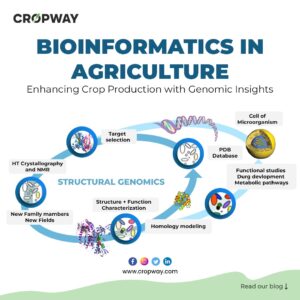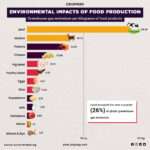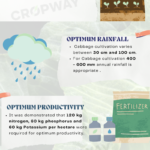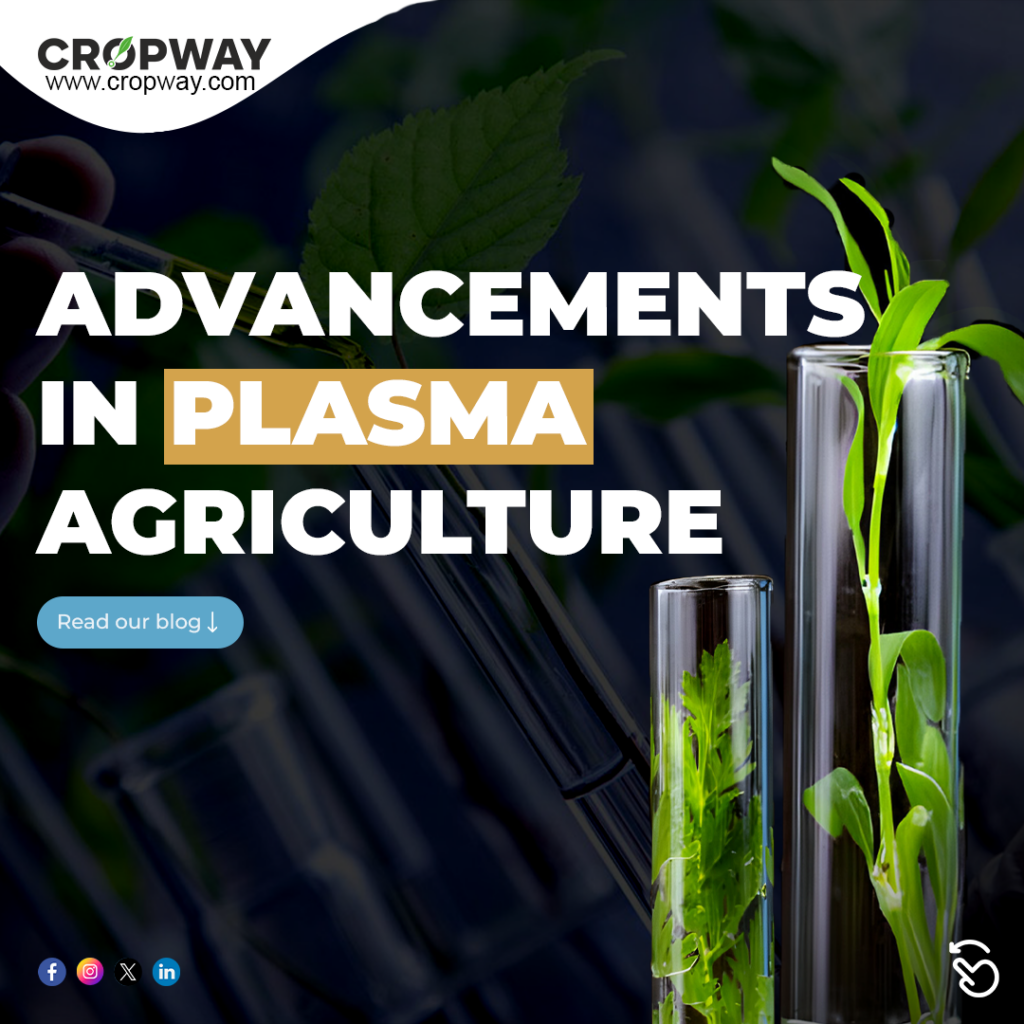
In recent times, plasma agriculture advancements have been employed for beneficial physical and chemical treatment of crops, seeds, and soil. The positive effects of plasma in agriculture result from a combination of reactive neutral species, charged particles (electrons, ions), electric fields, and ultraviolet radiation generated in the discharge process. Plasma species assist in seed germination, seed sterilization, enhancing plant growth, pest management, maintaining the quality of agricultural products, and soil improvement. These applications collectively contribute to boosting food production and promoting sustainability.
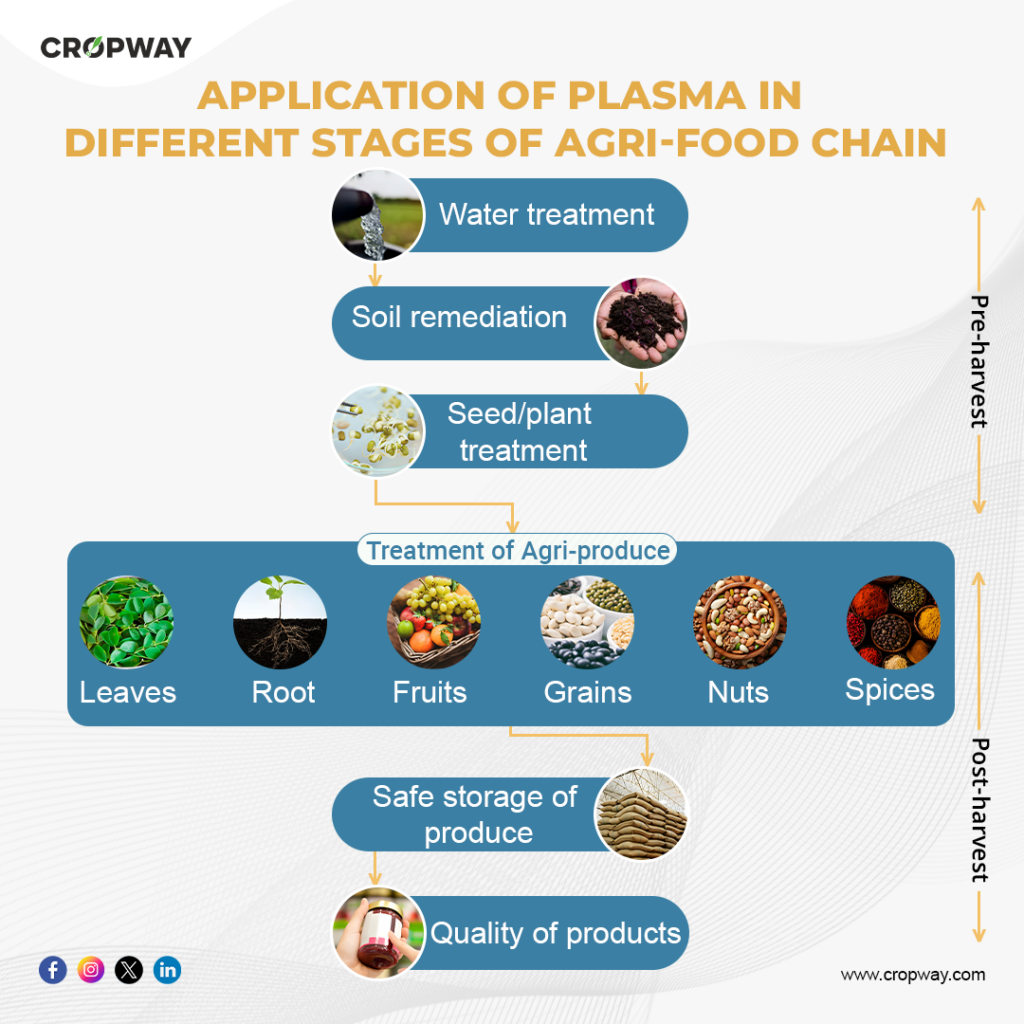
Need for Plasma in Agriculture:
As the global population expands, there’s a surge in food demand, yet crop yields have notably declined due to the impact of climate change. The United Nations Food and Agriculture Organization (FAO) attribute world food shortages primarily to climate change, rapid industrialization, and urbanization. Given the scarcity of arable land, the sole solution to tackle the food crisis involves increasing crop production economically while upholding agricultural product quality and safeguarding resources and ecosystems.
Globalization and rapid urbanization have greatly boosted improvements in agriculture and food processing to meet the rising food demands. It’s crucial to effectively manage food product safety and quality across the entire agricultural chain from pre-harvest to post-harvest stages to prevent food spoilage and enhance production. Many innovative approaches have been explored to achieve these objectives, recognizing that different technologies may be needed at various processing stages.
However, cold plasma stands out as a versatile solution for addressing numerous pre and post-harvest challenges such as soil/water contamination, microbial spoilage, insect issues, and extending seed dormancy. Its recent applications in shaping food also highlight its adaptability in agri-food processing. The sustainability of the plasma process, with advantages like on-site production and residue-free treatment, adds to its appeal. Reactive species, UV photons, and electrons within this plasma treatment offer distinct properties that effectively tackle a wide array of pre and post-harvest challenges.
This review provides a thorough exploration of the potential uses of plasma technology across the agri-food chain. While various plasma systems have been developed, their practical application has been largely limited to laboratory scales. Future research focusing on large-scale applications could unlock the full potential of cold plasma in this field.
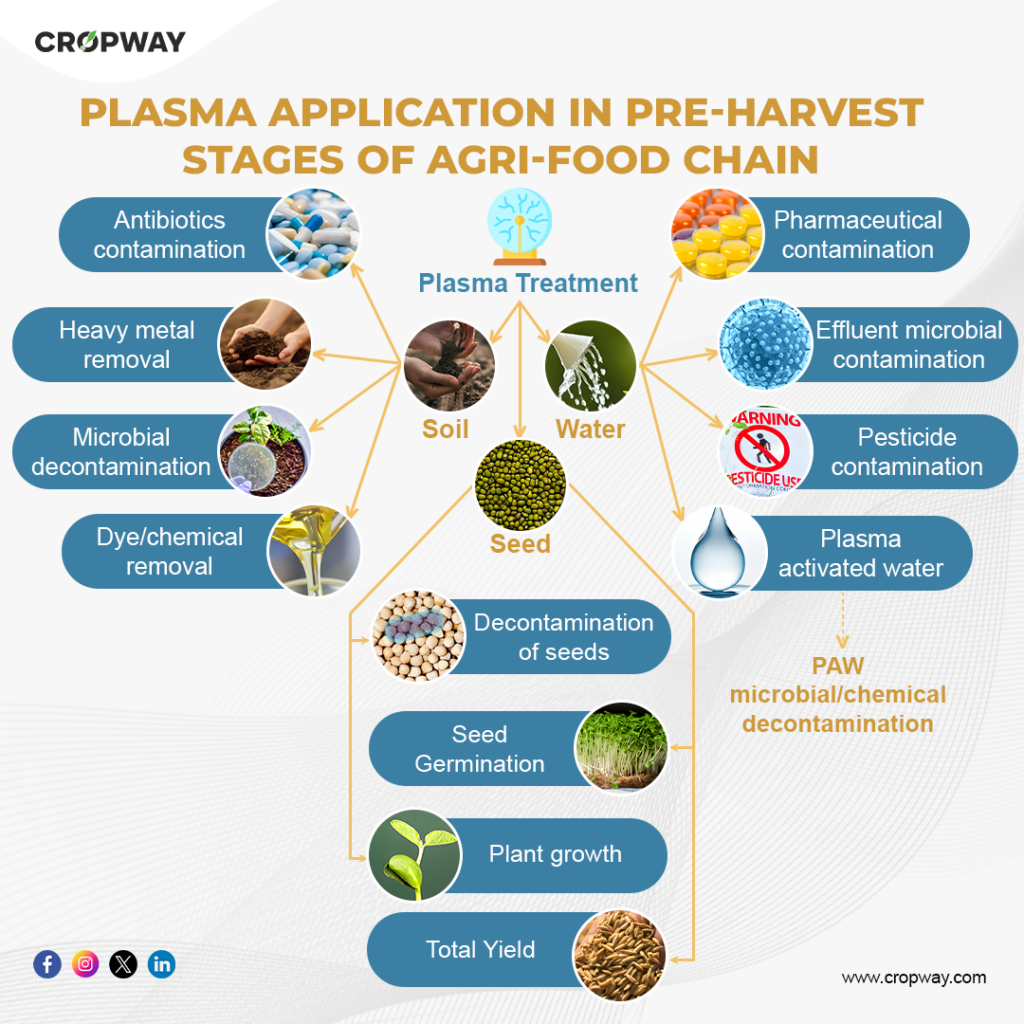
Use of Plasma in Agriculture:
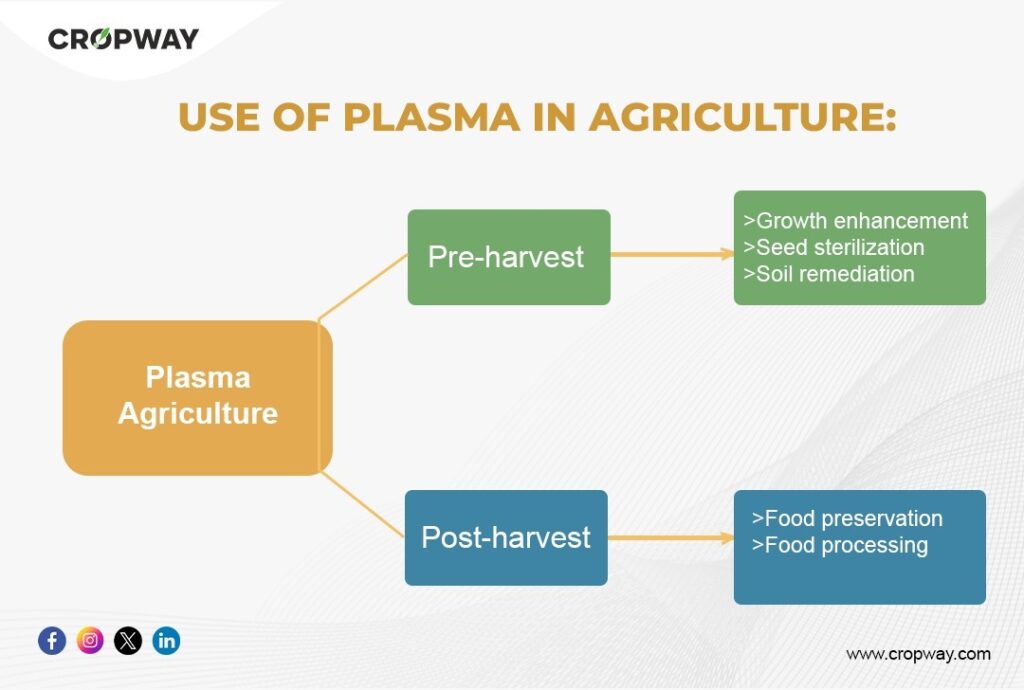
Applying Low Temperature Plasmas (LTPs) in agriculture often referred to as “Plasma Agriculture,” represents a method enabling enhanced crop yields without the necessity for extra pesticides or water usage.
1. The impact of plasma technology on plant growth: Plasma technology has demonstrated the ability to regulate the vegetative growth phase of plants. Studies indicate that treating seeds with plasma has a positive impact on early vegetative development. This treatment enhances seed germination and subsequent seedling growth, leading to longer and more robust seedlings with increased biomass.
2. Treating plants and soil: Soil remediation significantly influences agricultural output. The use of chemicals in agriculture, whether for fertilization or safeguarding plants against various pests and diseases, poses a considerable challenge. Plasma technology presents a potential environmentally friendly and cost-effective method for altering and purifying soil. To address issues such as fungal growth and harmful bacteria while preserving or enhancing nitrogen-fixing bacterial activity, precise and targeted treatment methods are essential. Plasma technology has the potential to effectively address these challenges and shield against the adverse effects of continuous cultivation. The effectiveness of plasma treatments depends on the moisture levels and composition of the soil.
3. Water subjected to plasma treatment: An alternative approach involves using plasma-activated water (PAW) rather than direct plasma treatment. Typically, PAW is generated through an arc or gliding arc discharge on the surface of water, often in an atmospheric environment. It’s widely believed that the antibacterial properties of PAW arise from a combination of low pH and a potent positive oxidation-reduction potential. These attributes influence seed germination and the growth of plants.
Nitrogen, particularly in the ionic form of NO3, is crucial for robust plant growth. PAW has the potential to significantly enhance plant characteristics, including leaf area, dry weight, and nitrogen content, potentially doubling their normal levels.
The application of plasma-activated water, generated through specific plasma discharges over water surfaces, is thought to impart unique antibacterial properties. This water, enriched with a low pH and a potent oxidation-reduction potential, appears to play a significant role in influencing both seed germination and subsequent plant development.
4. Treating seeds with plasma: The use of plasma agriculture in seed treatment has shown promising results in promoting the initial stages of plant growth. It accelerates seed germination and supports the growth of stronger seedlings, fostering increased biomass production. This method’s efficacy lies in its capacity to influence the early developmental stages of plants, contributing to healthier and more vigorous vegetation.
Seeds remain dormant until they encounter favorable conditions for germination. Plasma generates reactive species, such as nitrous oxide, through its discharge process, which breaks this dormancy, resulting in accelerated seedling germination.
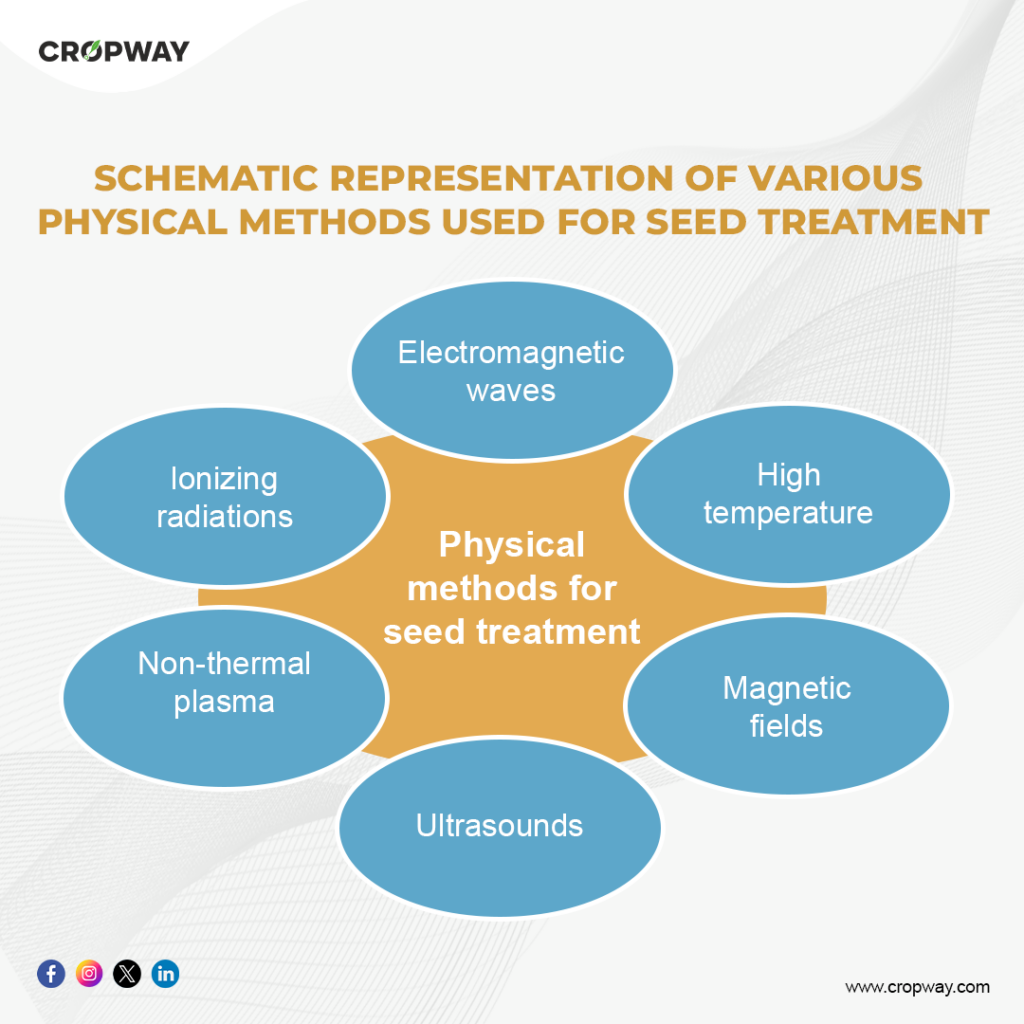
Advantages of Plasma Agriculture Technology:
- Accelerated germination rate
- Treatment at lower temperatures
- Swift seed treatment process
- Plasma generation in the nearby atmosphere
- Cost-effective operation
- Eco-friendly approach
In what ways does plasma enhance seedling germination?
Plasma agriculture accelerates seedling germination by breaking seed dormancy, facilitating a rapid and robust growth and development process. This phenomenon occurs as plasma aids in the disruption of seed dormancy, leading to an expedited and healthier germination of seedlings. In essence, plasma significantly contributes to enhancing the speed at which seedlings germinate.
Applying plasma agriculture technology in the post-harvest phase
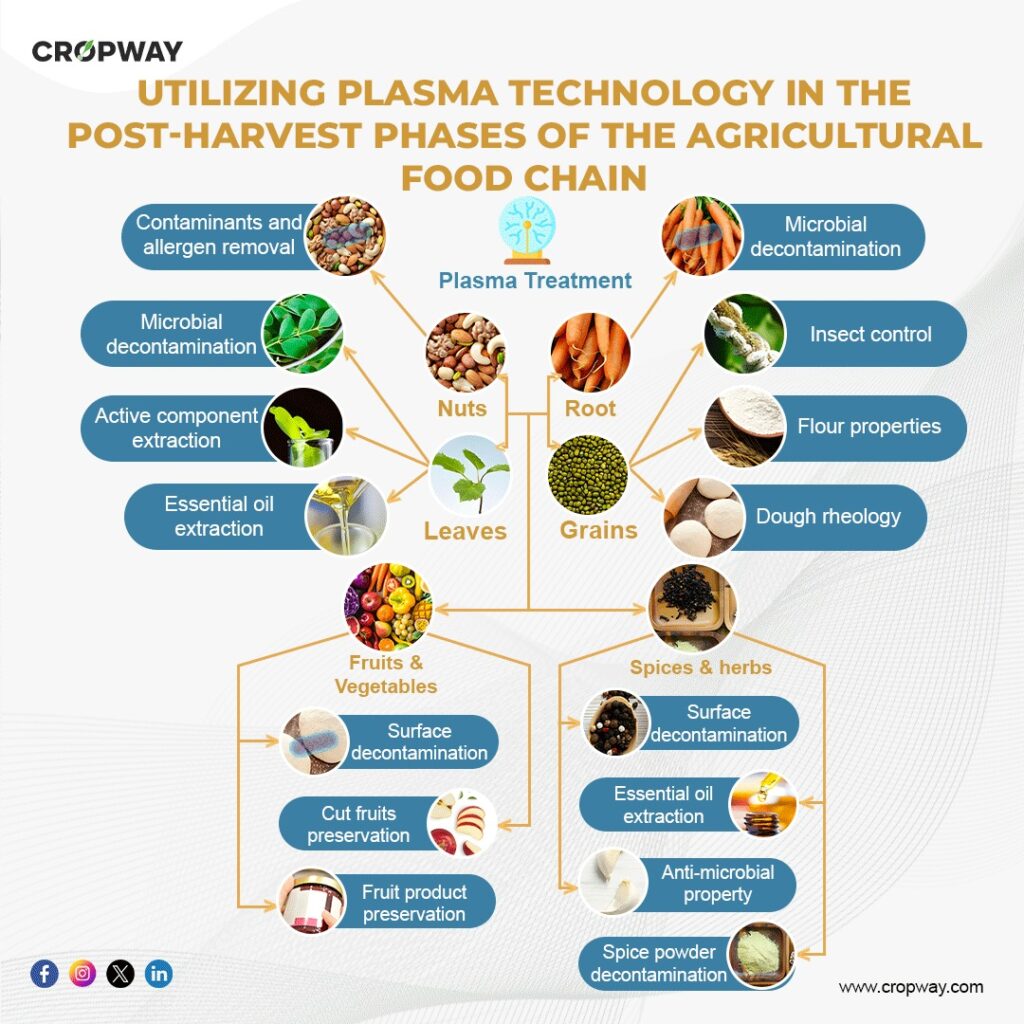
Certain edible products like leaves, roots, fruits, nuts, and spices often face microbial contamination or allergen presence. Plasma treatment has the potential to reduce contaminants and increase the active component levels in these food items. However, the effectiveness of plasma treatment varies based on the surface characteristics of different products. Generally, smoother surfaces exhibit better microbial removal compared to uneven surfaces, possibly due to the challenge of plasma species penetrating porous structures. This section will explore the benefits of plasma agriculture treatments, including decontamination and disinfection of grains, enhanced extraction of essential oils, and functional alterations of flours. Additionally, this treatment, like others, may induce minor undesired changes, which will also be discussed.
Conclusion
Plasma agriculture involves utilizing a nutrient solution that encompasses all the necessary properties essential for robust plant growth. This approach not only adds extra value for farmers but also extends its application to production, waste treatment, and harvesting processes. Considered an eco-friendly farming method, plasma agriculture relies on innovative technology to achieve its objectives. Furthermore, plasma agriculture technology exhibits potential in water treatment applications, demonstrating its ability to enhance plant growth when air and water come into contact with activated plasma.
You might also want to read: Top 6 methods for soil sampling efficiency


